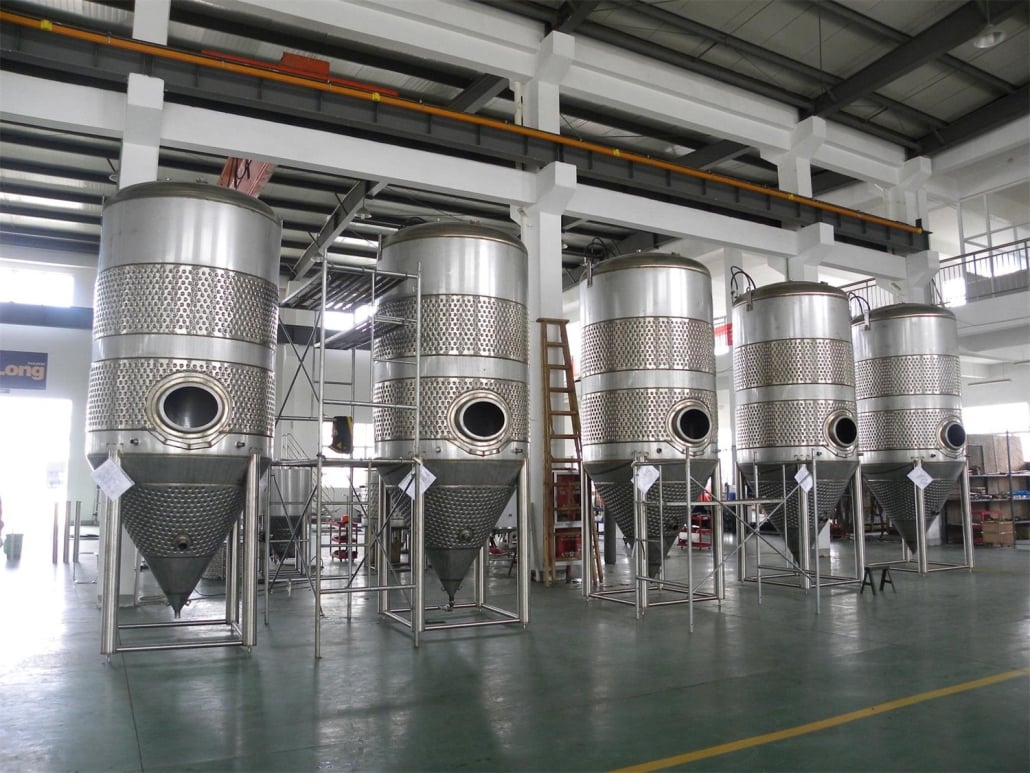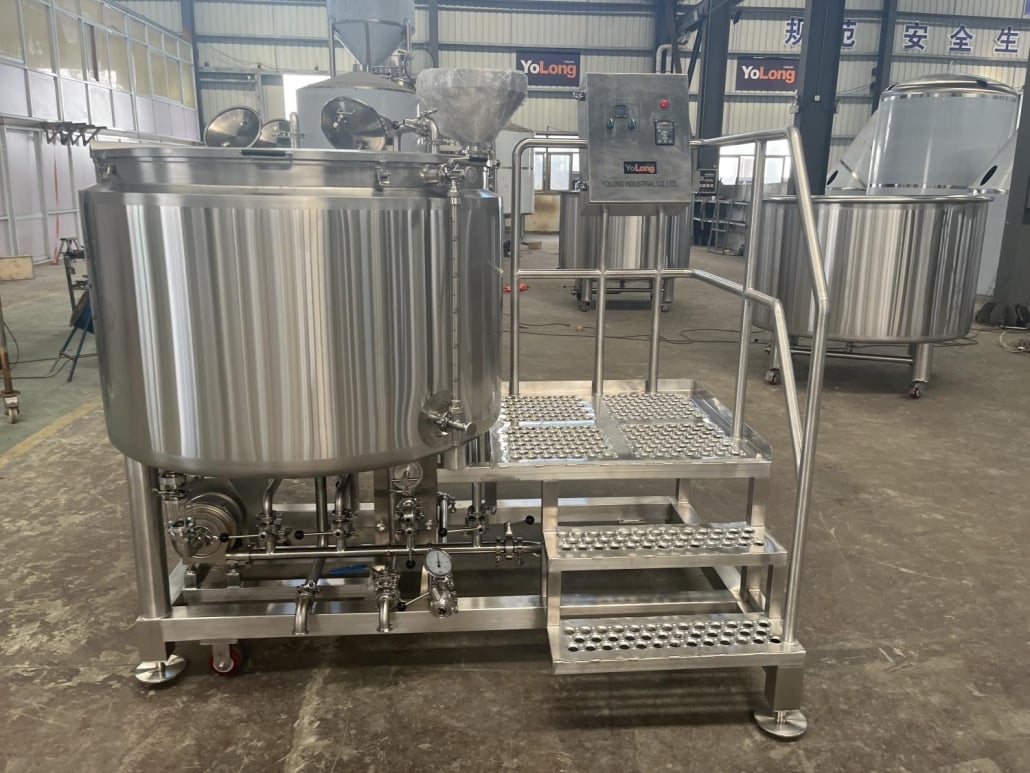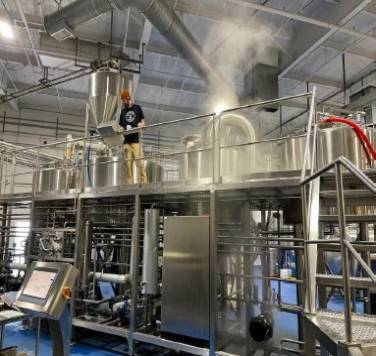Ultimate Guide to Beer Brewing Equipment
Beer brewing is an art, a science, and a beloved craft for many enthusiasts around the world. Whether you’re a homebrewer looking to perfect your batch or an aspiring microbrewery entrepreneur, the right beer brewing equipment is essential for success. This guide will walk you through everything you need to know about beer brewing equipment, from the basic tools to advanced machinery, along with detailed tables for easy comparison and selection.
Overview of Beer Brewing Equipment
The world of beer brewing equipment can be overwhelming, with a variety of tools and machines required to create the perfect brew. Understanding the basics and knowing what each piece of equipment does will help you make informed decisions. In this section, we’ll provide a broad overview of the essential equipment, their functions, and how they contribute to the brewing process.
Key Equipment for Beer Brewing
Fermentation Vessels: These are where the magic happens. Yeast ferments the wort into beer in these containers. Fermentation vessels come in various sizes and materials, including glass, plastic, and stainless steel.
Brewing Kettles: The brewing kettle is where you boil your wort. These come in different sizes and materials, each offering unique benefits and drawbacks.
Mash Tuns: This vessel is used for mashing, where malted grains are soaked in hot water to convert starches into fermentable sugars.
Heat Exchangers: These cool down the wort after boiling, making it safe to add yeast for fermentation.
Pumps: Essential for moving liquids around the brewery, from transferring wort to fermenters to cleaning processes.
Grain Mills: Used to crush grains before mashing, ensuring a proper mash efficiency.
Hoses and Tubing: Critical for transferring liquids at various stages of brewing.
Cleaning Equipment: Cleanliness is paramount in brewing. Specialized cleaning tools and sanitizers are necessary to maintain hygiene.
Control Systems: Advanced setups include computerized systems for precise control over the brewing process.

Detailed Equipment Guide
Let’s dive deeper into each piece of equipment, exploring their types, functions, and what to consider when selecting them.
Fermentation Vessels
Fermentation vessels are where the wort transforms into beer. They come in various types, each suited to different scales and styles of brewing.
Types of Fermentation Vessels:
- Glass Carboys: Popular for homebrewers, easy to clean, and do not affect the taste of the beer.
- Plastic Buckets: Affordable and lightweight, but can scratch easily and harbor bacteria.
- Stainless Steel Conicals: Preferred for professional brewers, offering durability and ease of cleaning, with features like bottom drains for yeast harvesting.
Brewing Kettles
Brewing kettles are crucial for boiling the wort. Here’s what to consider:
Types of Brewing Kettles:
- Aluminum Kettles: Lightweight and inexpensive, but can react with acidic wort.
- Stainless Steel Kettles: Durable, non-reactive, and preferred for their longevity and ease of cleaning.
- Electric Kettles: Offer precise temperature control, ideal for indoor brewing setups.
Mash Tuns
Mash tuns are used to convert starches from grains into fermentable sugars.
Types of Mash Tuns:
- Cooler Mash Tuns: Insulated and maintain temperature well, suitable for homebrewers.
- Stainless Steel Mash Tuns: Durable and easier to clean, often equipped with false bottoms for better lautering.
Heat Exchangers
Heat exchangers cool the wort quickly after boiling, preventing contamination and preparing it for fermentation.
Types of Heat Exchangers:
- Plate Chillers: Compact and efficient, often used in professional setups.
- Counterflow Chillers: Excellent for homebrewers, using a coil system to cool wort quickly.
Pumps
Pumps are essential for transferring liquids at different stages of brewing.
Types of Pumps:
- Magnetic Drive Pumps: Preferred for brewing due to their ability to handle hot liquids and easy maintenance.
- Self-Priming Pumps: Ideal for larger setups where liquid transfer efficiency is critical.
Grain Mills
Grain mills are used to crush grains before mashing.
Types of Grain Mills:
- Corona Mills: Affordable and versatile, suitable for homebrewing.
- Roller Mills: Offer better control over the crush size, preferred for more precise brewing.
Hoses and Tubing
Hoses and tubing are critical for transferring liquids.
Considerations for Hoses and Tubing:
- Material: Ensure they are food-grade and can handle high temperatures.
- Length and Diameter: Must match your system’s requirements for efficient transfer.
Cleaning Equipment
Maintaining cleanliness is vital in brewing.
Types of Cleaning Equipment:
- Brushes and Scrubbers: For manual cleaning of vessels and equipment.
- Chemical Sanitizers: Ensure all surfaces are free from contaminants.
- Automated Clean-In-Place (CIP) Systems: Used in larger breweries for efficient cleaning.
Control Systems
Control systems help manage the brewing process with precision.
Types of Control Systems:
- Manual Systems: Require hands-on monitoring and adjustments.
- Automated Systems: Use sensors and software to maintain optimal brewing conditions.
Table of Equipment Types
| Equipment Type | Description | Pros | Cons |
|---|---|---|---|
| Fermentation Vessels | Containers for fermenting wort into beer | Various materials available, different scales | Cost varies, maintenance required |
| Brewing Kettles | Vessels for boiling wort | Durable options, various sizes and materials | Initial investment can be high |
| Mash Tuns | Vessels for mashing grains | Insulated options, easy temperature control | Size limitations for homebrewers |
| Heat Exchangers | Devices for cooling wort quickly | Efficient cooling, compact options | Can be expensive, cleaning required |
| Pumps | Used for transferring liquids | Efficient transfer, various types available | Maintenance needed, can be noisy |
| Grain Mills | Devices for crushing grains | Improved mash efficiency, various types | Initial cost, space required |
| Hoses and Tubing | For transferring liquids at different brewing stages | Flexible, food-grade options available | Must be replaced periodically, cleaning necessary |
| Cleaning Equipment | Tools and chemicals for maintaining cleanliness | Essential for hygiene, various options | Regular maintenance required |
| Control Systems | Manage and monitor the brewing process | Precision control, automated options available | Expensive, requires technical knowledge |
The Brewing Process
Brewing beer involves several stages, each requiring specific equipment and techniques. Let’s explore the brewing process step-by-step:
Mashing
Mashing is the first step in the brewing process, where crushed grains are mixed with hot water in a mash tun. This process converts the starches in the grains into fermentable sugars. The temperature and duration of mashing are crucial for determining the flavor and body of the beer.
Boiling
After mashing, the liquid, now called wort, is boiled in a brewing kettle. Boiling serves multiple purposes: it sterilizes the wort, extracts flavors from hops, and evaporates unwanted compounds. This stage typically lasts between 60 to 90 minutes.
Cooling
Once boiling is complete, the wort must be cooled rapidly to a temperature suitable for fermentation. Heat exchangers, such as plate or counterflow chillers, are used to achieve this quickly, preventing contamination and preparing the wort for yeast addition.
Fermentation
Cooled wort is transferred to fermentation vessels, where yeast is added. This stage, lasting from a few days to several weeks, is where the yeast converts sugars into alcohol and carbon dioxide, creating beer. The temperature and conditions must be carefully controlled to ensure the desired flavor profile.
Conditioning
After primary fermentation, the beer may undergo conditioning, either in the same vessel or in separate conditioning tanks. This stage allows flavors to mature and unwanted compounds to settle out. Some beers are also carbonated during this stage.
Packaging
Finally, the beer is packaged for consumption. This can be done in bottles, cans, or kegs. Each method has its own equipment and considerations, such as bottle cappers, can seamers, or kegging systems.
Equipment Capacity, Spaces, Design, Layout, Customization
When selecting beer brewing equipment, it’s essential to consider capacity, space requirements, design, layout, and customization options. Here’s a detailed table to help you make informed decisions:
| Equipment Type | Capacity Range | Space Requirements | Design Options | Customization |
|---|---|---|---|---|
| Fermentation Vessels | 1 gallon to 30 barrels | Varies by size | Glass, plastic, stainless steel | Custom fittings, ports, and valves |
| Brewing Kettles | 5 gallons to 60 barrels | Varies by size | Aluminum, stainless steel, electric | Custom ports, integrated heating elements |
| Mash Tuns | 5 gallons to 60 barrels | Varies by size | Insulated coolers, stainless steel | False bottoms, sparge arms, insulation |
| Heat Exchangers | 5 gallons to commercial-scale volumes | Compact | Plate, counterflow | Customized for specific brewing systems |
| Pumps | Varies based on system needs | Small footprint | Magnetic drive, self-priming | Variable speed control, temperature tolerance |
Suppliers and Price Range
Finding reliable suppliers is crucial when investing in beer brewing equipment. Here’s a table detailing suppliers and their price ranges:
| Supplier | Types of Equipment Offered | Price Range | Additional Information |
|---|---|---|---|
| Homebrew Shop A | Fermentation vessels, brewing kettles, pumps | $100 – $1,000 | Specializes in small-scale equipment, local support available |
| Industrial Supplier B | Stainless steel tanks, automated brewing systems | $5,000 – $100,000+ | Offers commercial-grade equipment, customization options |
| Online Retailer C | Complete brewing setups, heat exchangers | $500 – $10,000 | Wide selection, shipping available worldwide |
Installation, Operation, Maintenance
Proper installation, regular operation, and maintenance are vital for the longevity and efficiency of beer brewing equipment. Here’s what you need to know:
| Equipment Type | Installation | Operation | Maintenance |
|---|---|---|---|
| Fermentation Vessels | Basic setup, sanitize before use | Monitor fermentation process | Clean after each use, sanitize regularly |
| Brewing Kettles | Connect to power and water sources | Boil wort, control temperature | Clean after each use, descale as needed |
| Mash Tuns | Setup plumbing for water circulation | Manage mash temperature | Clean false bottom, inspect seals regularly |
| Heat Exchangers | Connect to plumbing | Monitor cooling process | Clean plates or coils, inspect for leaks |
| Pumps | Secure to stable surface | Adjust flow rates as needed | Regular maintenance of seals and bearings |
| Grain Mills | Secure to work surface | Adjust crush size | Clean after each use, check motor periodically |
How to Choose a Supplier
Choosing the right supplier involves considering several factors beyond just equipment prices. Here’s a guide to help you make an informed decision:
| Consideration | Details |
|---|---|
| Reputation | Look for suppliers with positive reviews and a solid reputation in the brewing community. |
| Support Availability | Check if the supplier offers technical support, warranty options, and after-sales service. |
| Customization Options | Evaluate whether the supplier can customize equipment to fit your specific brewing needs. |
| Shipping and Delivery | Consider shipping costs, delivery times, and whether international shipping is available. |
| Customer Feedback | Read customer testimonials and reviews to gauge satisfaction levels with the supplier’s products and services. |
Pros and Cons of Beer Brewing Equipment
Every type of brewing equipment comes with its own set of advantages and limitations. Here’s a comparative analysis to help you choose the best options for your brewing setup:
| Equipment Type | Pros | Cons |
|---|---|---|
| Fermentation Vessels | Versatile, available in various sizes and materials | Costly for larger capacities, maintenance required |
| Brewing Kettles | Durable, precise temperature control | Initial investment can be high, cleaning required |
| Mash Tuns | Insulated options, maintain mash temperature | Limited size for large-scale brewing |
| Heat Exchangers | Efficient cooling, compact design | Expensive, cleaning and maintenance essential |
| Pumps | Efficient liquid transfer, various types available | Noisy operation, occasional maintenance needed |
| Grain Mills | Improved crush consistency, adjustable settings | Initial cost, space required for setup |

FAQs
What type of fermentation vessel is best for a beginner homebrewer?
For beginners, plastic buckets or glass carboys are often recommended due to their affordability and ease of use. They are straightforward to clean and sanitize, making them ideal for learning the brewing process.
Why is stainless steel preferred for brewing kettles?
Stainless steel kettles are preferred for their durability, ease of cleaning, and non-reactive properties with acidic wort. They also offer excellent heat retention, making them ideal for consistent brewing temperatures.
How do I choose between a plate chiller and a counterflow chiller?
Choosing between a plate chiller and a counterflow chiller depends on your brewing scale and preferences. Plate chillers are more compact and efficient for larger volumes, while counterflow chillers are excellent for precise cooling in smaller setups like homebrewing.
What factors should I consider when buying a grain mill?
When purchasing a grain mill, consider factors like crush consistency, adjustable settings for different grain types, and the volume you intend to brew. Roller mills offer better control over the crush size compared to simpler models like Corona mills.
Where can I find customized brewing equipment?
Industrial suppliers often offer customization options for brewing equipment, allowing you to tailor components like ports, fittings, and sizes to match your specific brewing needs. Online retailers may also offer some level of customization.
How do I maintain hygiene in brewing equipment?
Regular cleaning and sanitization are crucial for maintaining hygiene in brewing equipment. Use food-grade cleaning agents and sanitize all surfaces that come into contact with wort or beer to prevent contamination and off-flavors.
Share this entry
Interested in learning more about Brewing Systems including additional details and pricing information? Please use the form below to contact us!
YOLONG BREWERY EQUIPMENT FAQS
- Commercial Brewery / Craft Brewery / Microbrewery / Nanobrewery
- What is The Difference Between Craft Beer and Industrial Beer?
- The Bespoke Differences In Custom Brewing Systems
- Everything You Need to Know About Kettle Souring
- How to Choose Brewing Equipment for Your business?
- How To Choose The-Best Partner To Build Your Commercial Microbrewing System?
- Two Detection Sensors That You Need To Use In Your Brewhouse System
- Remote Control Applications in Brewing Equipment/How does it work?
- How To Clean Your Brand New Brewery Tanks?

